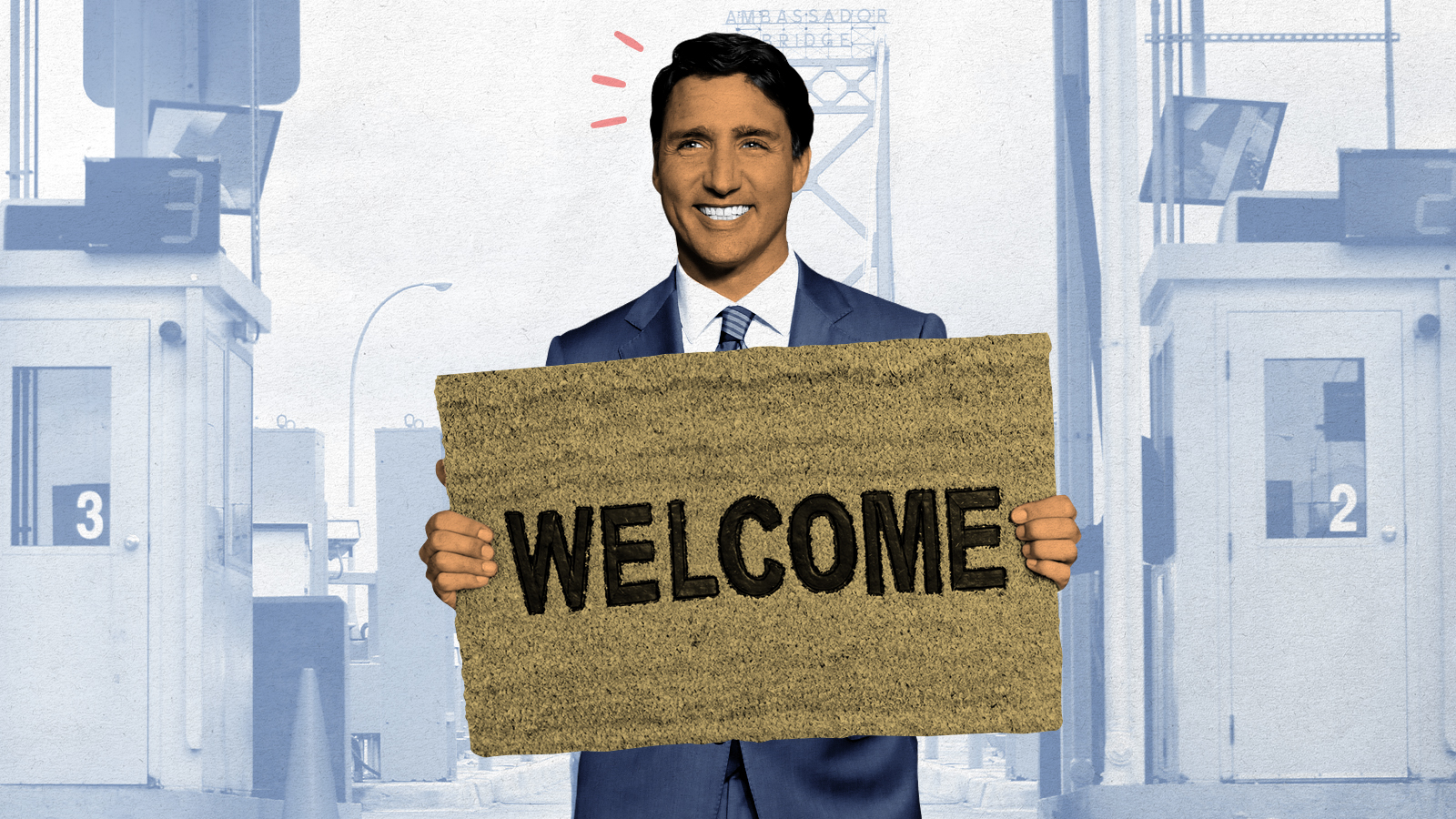Why Canada's new immigration plan matters for America


While most news outlets are focused on the Canadian "Freedom Convoy" and the government's response to it, another story out of Ottawa with potentially bigger long-term consequences has gone underreported. That's the announcement that Canada has increased immigration targets for the next three years to their highest level in a century. This is big news for Canada, but it should also be closely studied by the United States, which faces analogous demographic and economic challenges.
Canada's fertility rate stands at an anemic 1.4 children per woman, far below the replacement rate of 2.1 — meaning that, if not for immigration, the Canadian population would be shrinking. That would put a heavy strain on the country's welfare state, with fewer workers available over time to pay into government programs that provide benefits and social services. Canada's economy is also suffering from pandemic-related labor shortages.
In response to both trends — as well as a need to clear a backlog of immigration applications — the Canadian government has decided to increase immigration targets over the next three years to levels that exceed 1 percent of the country's population each year. (For comparison, the United States in recent years has been granting lawful permanent resident status to well under one third of 1 percent of the American population.)
The Week
Escape your echo chamber. Get the facts behind the news, plus analysis from multiple perspectives.

Sign up for The Week's Free Newsletters
From our morning news briefing to a weekly Good News Newsletter, get the best of The Week delivered directly to your inbox.
From our morning news briefing to a weekly Good News Newsletter, get the best of The Week delivered directly to your inbox.
The increase in immigration to Canada will also be heavily weighted toward immigrants admitted through economic categories (56 percent in 2022 and rising to 59 percent in 2024), with the share admitted because of family connections (24-25 percent) or for humanitarian reasons (20 percent in 2022 and dropping to 16 percent in 2024) significantly smaller. The relative share of each category has remained fairly steady over the past three decades, with the bulk of arrivals filling targeted economic needs, especially for skilled workers.
American policymakers should pay close attention to these developments north of the border. The U.S. also has a plummeting fertility rate, with the country's current rate of population growth the slowest since the nation's founding. We're also suffering from labor shortages. Both trends point toward the need for immigration reform along Canadian lines, with higher levels and more economically focused targets.
Can Washington pull it off? It doesn't seem likely. While just 24 percent of Americans want immigration decreased, these restrictionists are highly motivated by the issue and form a powerful bloc within the Republican Party. That's enough to keep the GOP from going along with an immigration reform package — and margins are likely too narrow in Congress to get it done without Republican buy-in. That gives the restrictionist minority an effective legislative veto.
That's a real shame — and just the latest sign of America's political dysfunction contributing to economic and demographic decline.
A free daily email with the biggest news stories of the day – and the best features from TheWeek.com
Damon Linker is a senior correspondent at TheWeek.com. He is also a former contributing editor at The New Republic and the author of The Theocons and The Religious Test.
-
 Homeland Security Secretary Kristi Noem might not be long for Trumpland
Homeland Security Secretary Kristi Noem might not be long for TrumplandIN THE SPOTLIGHT She has been one of the most visible and vocal architects of Trump’s anti-immigration efforts, even as her own star risks fading
-
 Abrego García freed from jail on judge’s order
Abrego García freed from jail on judge’s orderSpeed Read The wrongfully deported man has been released from an ICE detention center
-
 $1M ‘Trump Gold Card’ goes live amid travel rule furor
$1M ‘Trump Gold Card’ goes live amid travel rule furorSpeed Read The new gold card visa offers an expedited path to citizenship in exchange for $1 million
-
 ECHR: is Europe about to break with convention?
ECHR: is Europe about to break with convention?Today's Big Question European leaders to look at updating the 75-year-old treaty to help tackle the continent’s migrant wave
-
 The Trump administration says it deports dangerous criminals. ICE data tells a different story.
The Trump administration says it deports dangerous criminals. ICE data tells a different story.IN THE SPOTLIGHT Arrest data points to an inconvenient truth for the White House’s ongoing deportation agenda
-
 Trump tightens restrictions for work visas
Trump tightens restrictions for work visasSpeed Read The length of work permits for asylum seekers and refugees has been shortened from five years to 18 months
-
 Why do Republicans fear immigration raids in North Carolina?
Why do Republicans fear immigration raids in North Carolina?Today’s Big Question Trump’s aggressive enforcement sparks backlash worries
-
 Memo signals Trump review of 233k refugees
Memo signals Trump review of 233k refugeesSpeed Read The memo also ordered all green card applications for the refugees to be halted



